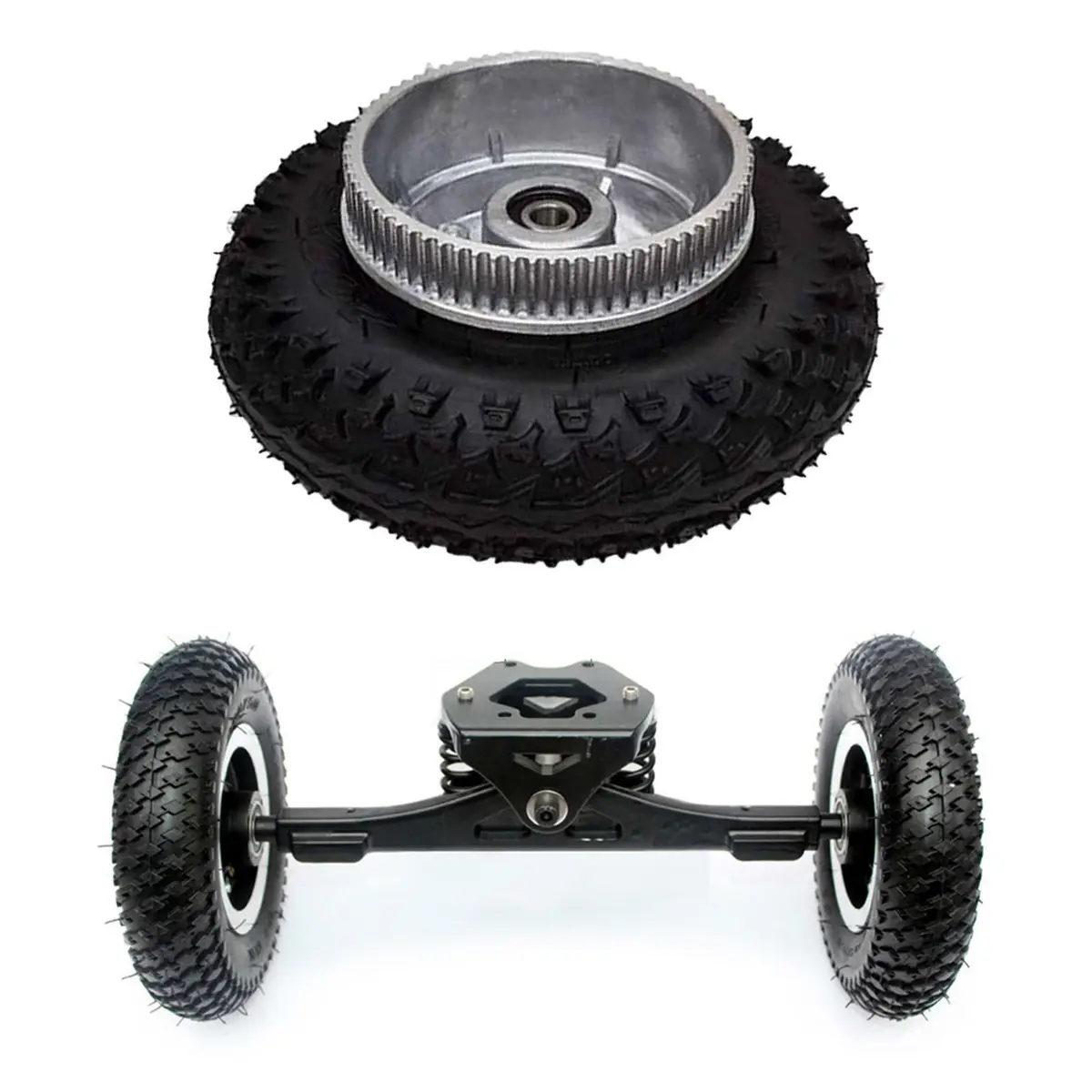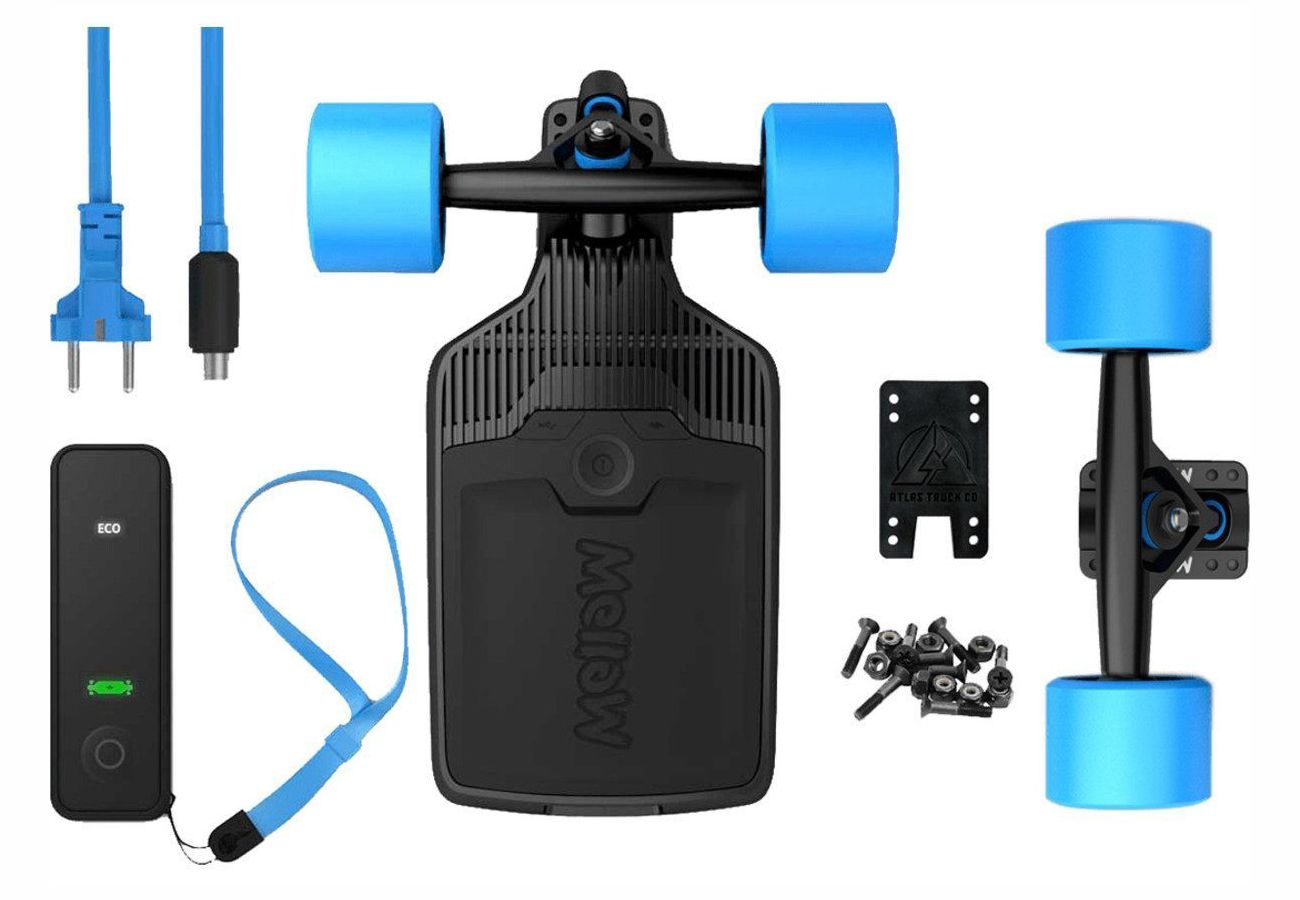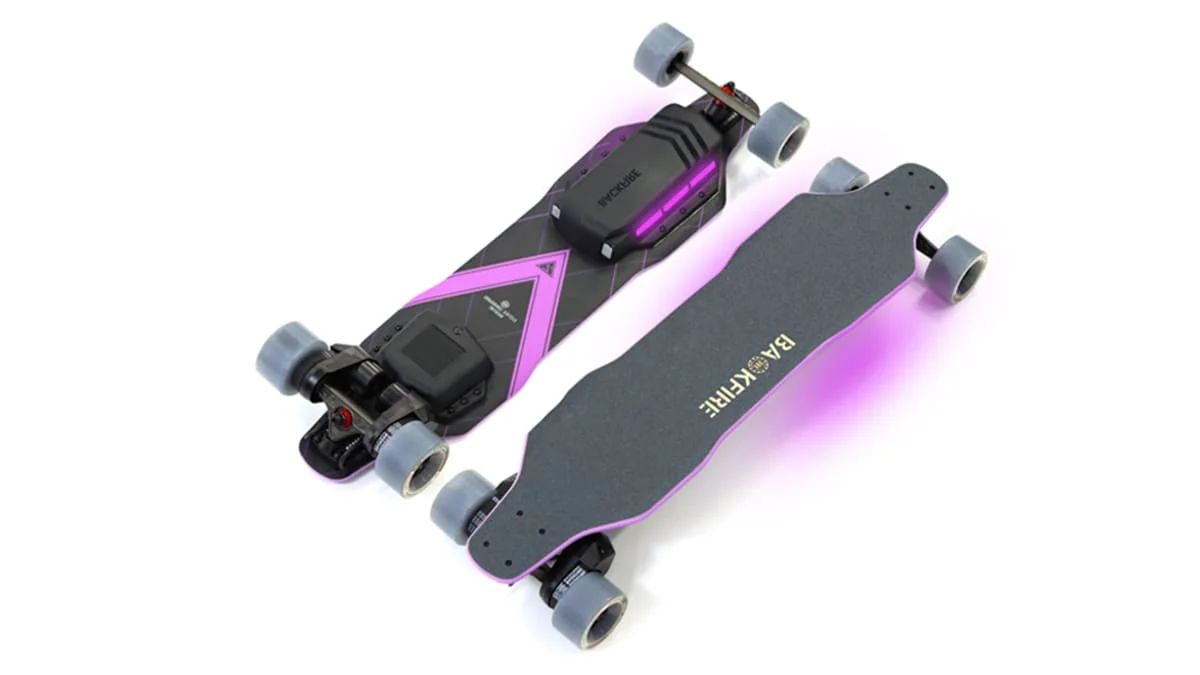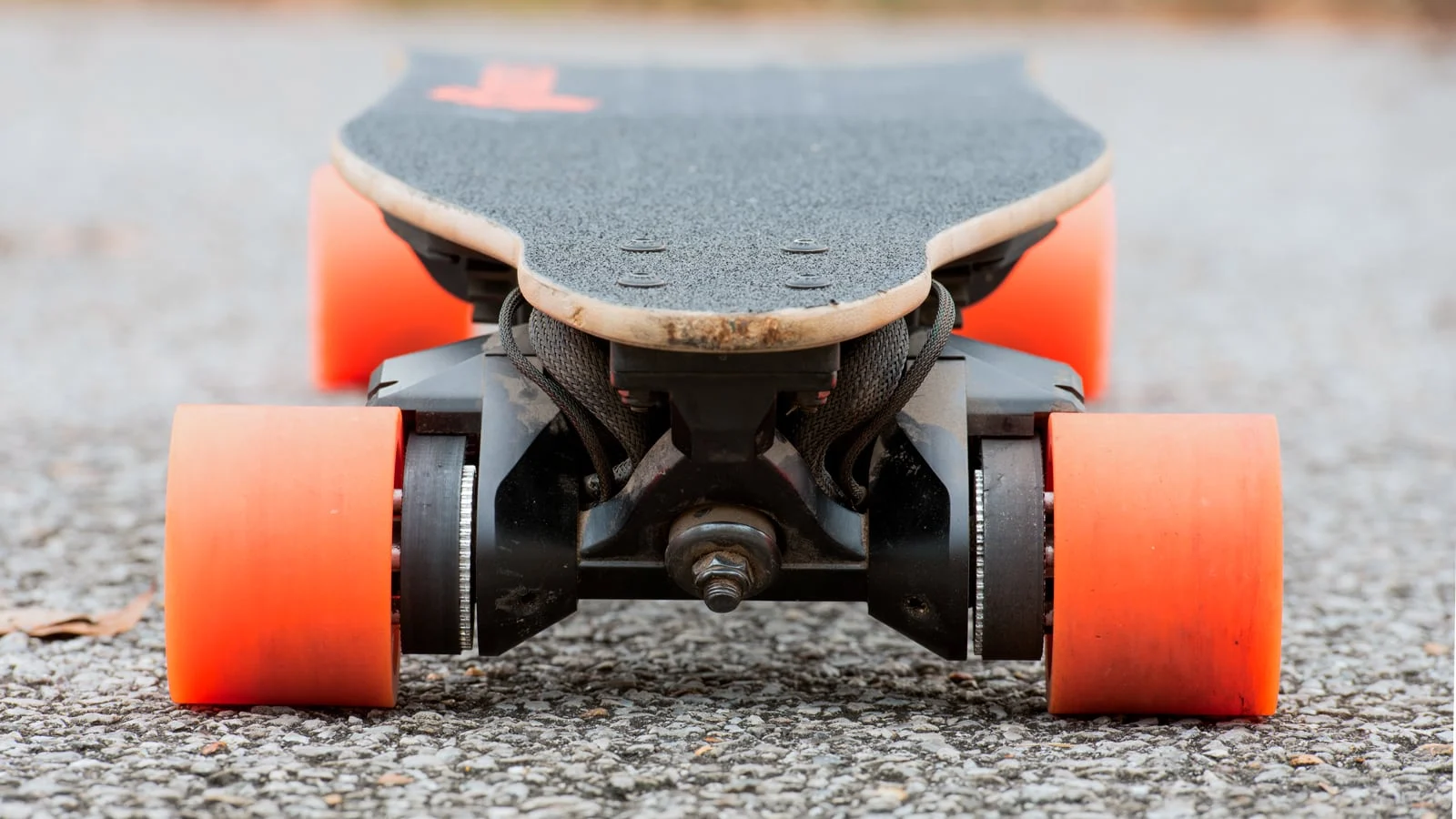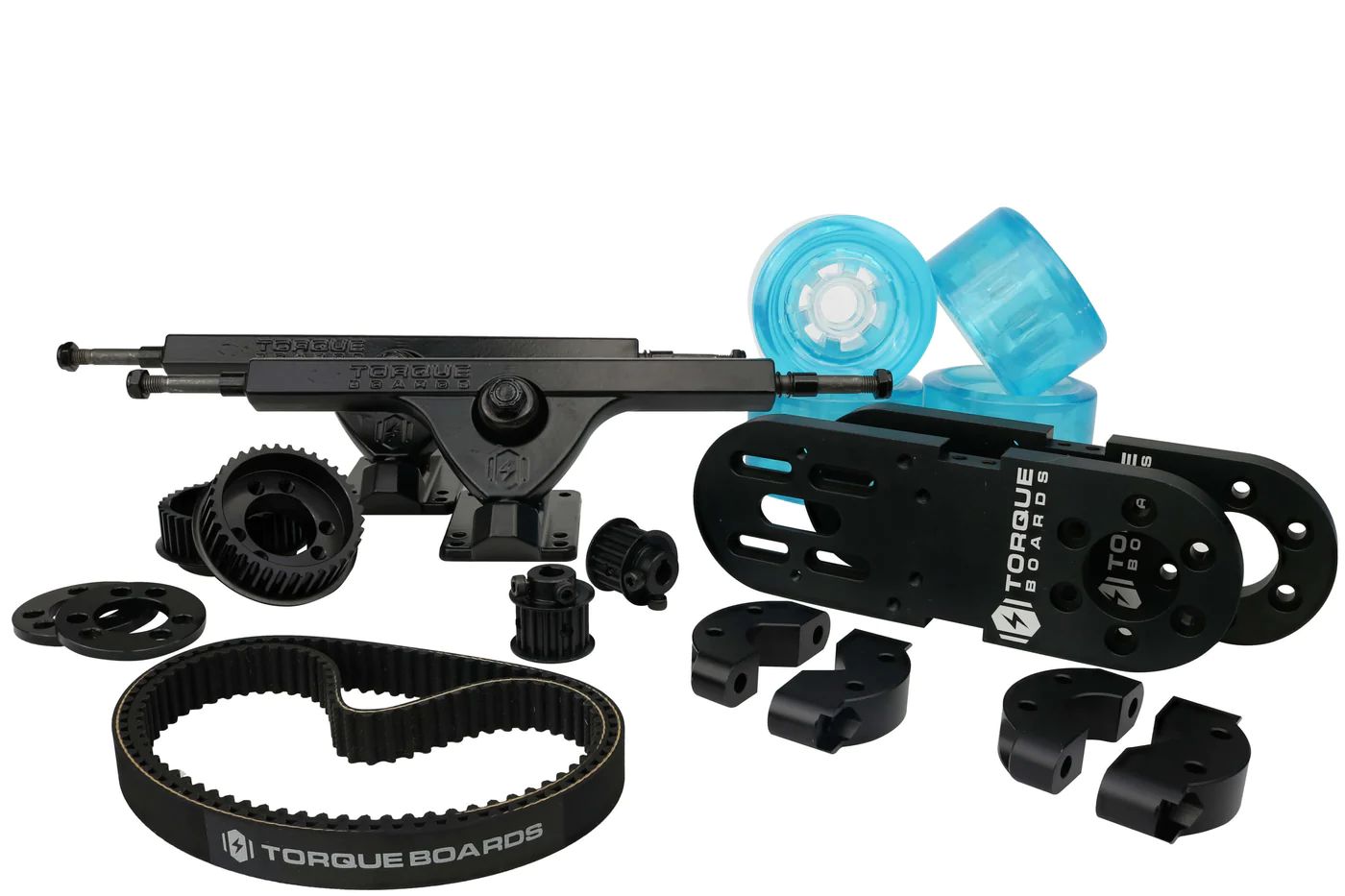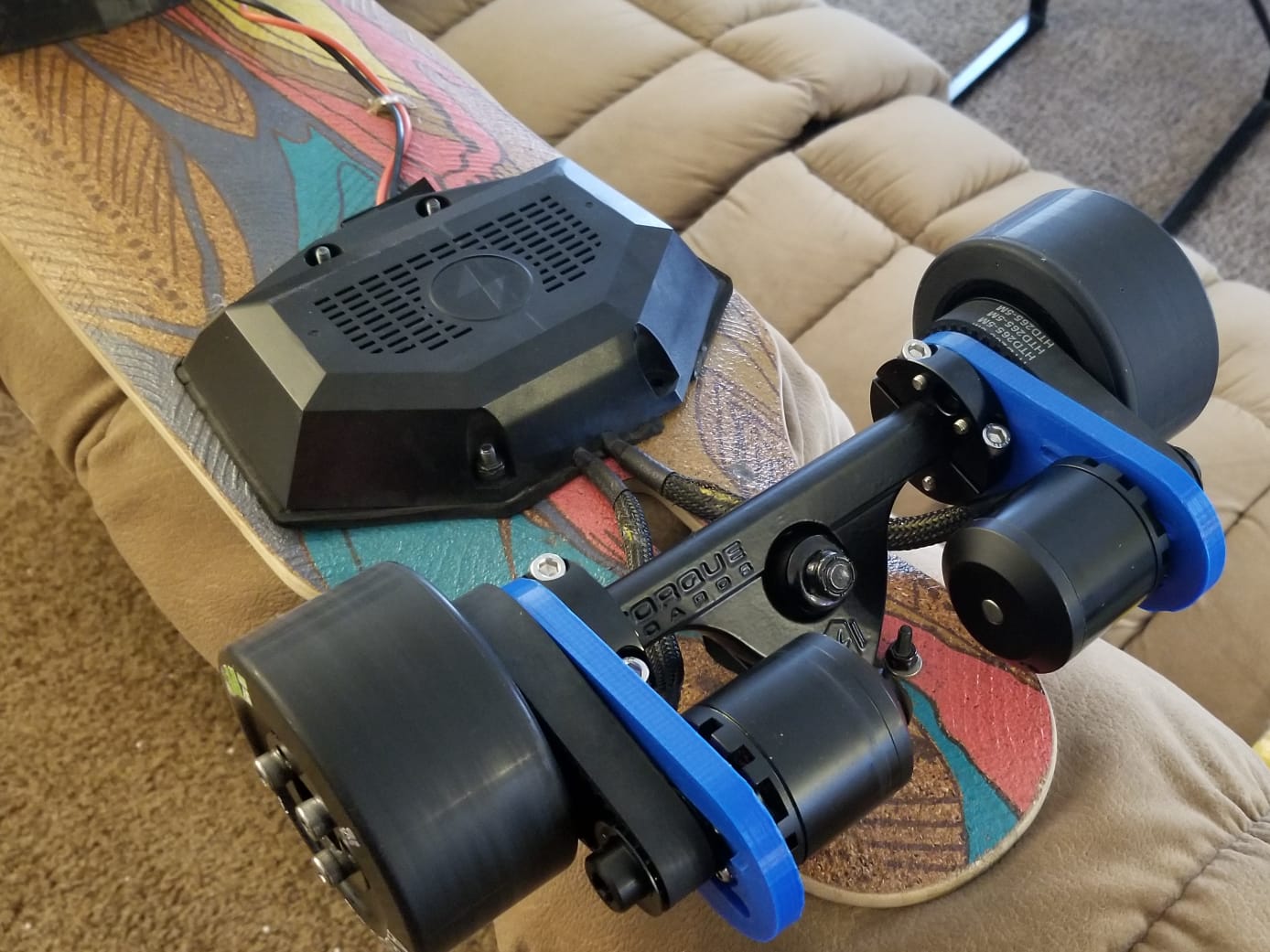Introduction
Welcome to the electrifying world of electric skateboards! If you’re a passionate skateboard enthusiast, chances are you’ve heard about the crucial role that pulleys play in these modern marvels. Whether you’re a beginner or a seasoned rider looking to upgrade your electric skateboard, understanding the importance of pulley size is essential.
In this article, we will explore the concept of pulleys in electric skateboards and delve into why their size matters. We’ll also discuss the various factors you should consider when choosing the right pulley size for your board, and how it affects the speed, torque, and efficiency of your ride.
Electric skateboards have revolutionized the way we experience urban transportation and have rapidly gained popularity among riders worldwide. These innovative boards provide a thrilling and eco-friendly mode of transportation, powered by electric motors and controlled by handheld remotes.
At the heart of an electric skateboard’s propulsion system are the pulleys. Pulleys are simple machines that consist of a wheel with a grooved rim and a belt that fits into these grooves. They are responsible for transferring the electrical motor’s power to the skateboard’s wheels, propelling riders forward.
The size of the pulley plays a crucial role in determining the performance characteristics of an electric skateboard. While the concept may seem technical, understanding the impact of pulley size is key to optimizing your riding experience.
So, why does pulley size matter? Well, the size of the pulley directly affects the speed, torque, and overall efficiency of the electric skateboard. By manipulating the pulley size, riders can customize their board to suit their specific riding style and preferences.
In the following sections, we’ll explore the relationship between pulley size and speed, torque, and efficiency in more detail. We’ll also discuss the different pulley size options available in the market and provide guidance on determining the right pulley size for your electric skateboard.
What is a Pulley in an Electric Skateboard?
Before diving into the significance of pulley size, let’s first understand what a pulley is in the context of an electric skateboard. A pulley is a wheel with a grooved rim, typically made of high-quality materials such as aluminum or steel. It is an integral part of the motor and drivetrain system in an electric skateboard.
The role of the pulley is to transfer the rotational motion and power from the electric motor to the wheels of the skateboard. This is accomplished through a belt that fits into the grooves of the pulley, forming a secure connection.
By connecting the motor to the wheels, the pulley ensures that the skateboard receives the necessary power to move forward. As the motor spins, the pulley rotates, pulling the belt and causing the wheels to turn. The size of the pulley directly impacts the speed, torque, and overall efficiency of the electric skateboard.
Electric skateboards typically have two pulleys – one attached to the motor and another connected to the wheels. These pulleys are designed to work together, ensuring a smooth transfer of power and a seamless riding experience. It is important to note that the size of both pulleys should be compatible to achieve optimal performance.
The pulley on the motor is generally referred to as the motor pulley or drive pulley, while the pulley connected to the wheels is known as the wheel pulley or driven pulley. These two pulleys work in tandem to provide the necessary power and motion for the electric skateboard to move.
It is worth mentioning that different electric skateboards may have different pulley configurations and designs. Some may have a single motor and pulley setup, while others might have a dual motor system with two sets of pulleys for enhanced performance. The specific configuration will depend on the design and specifications of the skateboard.
Now that we have a clear understanding of what a pulley is in an electric skateboard, let’s explore why the size of the pulley is a crucial factor to consider when it comes to optimizing the performance of your ride.
Why Does Pulley Size Matter?
When it comes to electric skateboards, the size of the pulley plays a significant role in determining the performance characteristics of the board. The pulley size directly affects the speed, torque, and overall efficiency of the skateboard. Let’s explore why pulley size matters:
1. Speed: The size of the pulley is closely linked to the speed at which the skateboard can travel. A larger motor pulley or smaller wheel pulley will result in higher top speeds, allowing riders to experience exhilarating fast-paced rides. Conversely, a smaller motor pulley or larger wheel pulley will reduce the top speed of the skateboard, making it more suitable for riders who prefer a comfortable cruising or commuting experience.
2. Torque: Torque refers to the rotational force or power that the motor can provide to the skateboard’s wheels. The size of the pulley has a direct impact on the torque output of the electric skateboard. A larger motor pulley or smaller wheel pulley will increase the torque, resulting in better hill-climbing capabilities, improved acceleration, and enhanced performance for off-road or rough terrain riding. On the other hand, a smaller motor pulley or larger wheel pulley will decrease the torque, making it more suitable for riders who prioritize stability and control at lower speeds.
3. Efficiency: The efficiency of an electric skateboard refers to how effectively it can convert electrical power to forward motion. The size of the pulley affects the overall efficiency of the skateboard by influencing the balance between speed and torque. Choosing the right pulley size can optimize the performance and energy consumption of the skateboard, allowing for longer rides and extended battery life. A well-matched pulley setup ensures that the motor operates within its optimal range, reducing strain and minimizing energy loss through friction.
In summary, pulley size is a critical factor in electric skateboard performance. It determines the speed, torque, and efficiency of the board, allowing riders to tailor their experience based on their preferences and riding style. Whether you crave high-speed thrills or prioritize torque for demanding terrains, selecting the appropriate pulley size is key to unlocking the full potential of your electric skateboard.
Factors to Consider When Choosing Pulley Size
Choosing the right pulley size is essential for optimizing the performance of your electric skateboard. Here are some factors to consider when deciding on the pulley size:
1. Riding Style: Your riding style is a crucial factor in determining the desired pulley size. If you enjoy high-speed rides and want to maximize the top speed of your electric skateboard, opting for a larger motor pulley or smaller wheel pulley can provide the desired outcome. On the other hand, if you prefer a more versatile board that offers better torque and stability for hill climbing or off-road adventures, a smaller motor pulley or larger wheel pulley may be more suitable.
2. Terrain: Consider the type of terrain you intend to ride on the most. If you frequently encounter steep hills or rough surfaces, choosing a pulley setup that offers higher torque with a smaller motor pulley or larger wheel pulley can provide the necessary power to tackle challenging terrains. Conversely, if you mostly ride on flat smooth surfaces, a pulley setup that emphasizes speed and efficiency with a larger motor pulley or smaller wheel pulley may be more suitable.
3. Performance Goals: Clearly define your performance goals for your electric skateboard. Are you looking for a board that offers blazing speed for adrenaline-fueled rides, or do you need a board that prioritizes stability and control at lower speeds? Understanding your performance objectives will help you determine the ideal pulley size that aligns with your goals.
4. Motor and Battery Specifications: Consider the specifications of the motor and battery on your electric skateboard. Different motors have specific torque and speed characteristics, and selecting a pulley size that matches the motor’s capabilities is crucial for optimal performance. Additionally, take into account the battery capacity and its ability to provide consistent power output for the desired riding experience. A well-matched pulley size will ensure that the motor and battery work together efficiently.
5. Overall Weight: The weight of the rider and the overall weight of the skateboard should be taken into account when selecting the pulley size. Heavier riders or boards with added accessories may benefit from a pulley setup that offers higher torque for better acceleration and power delivery.
6. Compatibility: Lastly, ensure that the chosen pulley size is compatible with your specific electric skateboard model. Different skateboards may have limitations on the pulley sizes that can be used due to design constraints or specific drivetrain configurations. Check the manufacturer’s recommendations or consult with experts to ensure compatibility.
By considering these factors and finding the right balance between speed, torque, and efficiency, you can select the ideal pulley size that enhances your riding experience and meets your specific requirements.
The Relationship between Pulley Size and Speed
The size of the pulley in an electric skateboard has a direct impact on the speed at which the board can travel. Understanding the relationship between pulley size and speed is essential for optimizing the performance of your ride.
Larger Motor Pulley or Smaller Wheel Pulley: Opting for a larger motor pulley or a smaller wheel pulley can increase the top speed of your electric skateboard. By increasing the circumference of the motor pulley or decreasing the circumference of the wheel pulley, the board gains a mechanical advantage that translates into higher speeds. This configuration allows for more revolutions per minute (RPM) of the motor, resulting in an increased rotational speed of the wheels.
Speed Enhancements: A larger motor pulley or smaller wheel pulley configuration is ideal for riders looking for high-speed rides and thrilling adventures. It is well-suited for riders who enjoy covering long distances quickly or those who want to experience the adrenaline rush of high-speed cruising.
Lower Gear Ratio: When the motor pulley is larger or the wheel pulley is smaller, it creates a lower gear ratio. This lower gear ratio allows for faster acceleration and higher top speeds. The motor can generate more rotations to cover the same distance as the wheels, resulting in increased speed.
Cautionary Considerations: While a larger pulley or smaller wheel pulley can significantly increase top speed, it is crucial to consider the balance with other factors such as torque and stability. Excessive emphasis on speed may compromise torque, making hill climbing or rough terrain performance more challenging. It is essential to find the right balance based on your riding style and preferences.
Overall Riding Experience: The relationship between pulley size and speed is a balancing act. Your electric skateboard’s speed capabilities should align with your riding style and the type of terrain you encounter most frequently. Finding the optimal pulley size to achieve your desired speed enhances your overall riding experience and allows you to push the boundaries of what’s possible with your electric skateboard.
Considerations for Safety: It is crucial to ride responsibly and consider safety whenever aiming for higher speeds. Ensure that you have the necessary protective gear, proper riding skills, and a clear understanding of the capabilities and limitations of your electric skateboard.
By understanding the relationship between pulley size and speed, you can customize your electric skateboard to achieve the desired level of velocity and exhilaration during your rides. Remember to prioritize safety and find the right balance that complements your riding style and preferences.
The Relationship between Pulley Size and Torque
The size of the pulley in an electric skateboard has a direct relationship with the torque it can deliver. Understanding this relationship is crucial for optimizing your electric skateboard’s performance, especially when it comes to tackling challenging terrain and achieving better acceleration.
Larger Wheel Pulley or Smaller Motor Pulley: Opting for a larger wheel pulley or a smaller motor pulley can increase the torque output of your electric skateboard. When the wheel pulley is larger or the motor pulley is smaller, there is a mechanical advantage that results in greater torque. This configuration allows the motor to transfer more rotational force to the wheels, providing better acceleration and hill-climbing capabilities.
Improved Hill Climbing: A larger wheel pulley or smaller motor pulley setup is well-suited for riders who often encounter steep inclines or challenging uphill terrains. The increased torque allows the skateboard to tackle these uphill sections with greater ease and efficiency. The extra power generated by the motor helps in overcoming resistance and maintaining a consistent speed uphill.
Enhanced Acceleration: Another benefit of a larger wheel pulley or smaller motor pulley configuration is improved acceleration. The increased torque results in a quicker response from the motor, allowing for faster acceleration and more rapid speed transitions. This is particularly beneficial for riders who enjoy quick bursts of speed or need the ability to navigate tight curves and obstacles with agility.
Lower Gear Ratio: A larger wheel pulley or smaller motor pulley creates a lower gear ratio, which amplifies the motor’s torque output. The lower gear ratio increases the mechanical advantage, enabling the skateboard to efficiently convert the power generated by the motor into rotational force and forward motion. This translates into better torque and pulling power, making it easier to overcome resistance and maintain speed in demanding riding situations.
Considerations for Speed Sacrifice: It’s important to note that prioritizing torque by selecting a larger wheel pulley or smaller motor pulley may come at the cost of top speed. The increased torque can reduce the maximum speed of the electric skateboard. Therefore, finding the right balance between torque and speed is essential to ensure that the skateboard meets your riding requirements and preferences.
Matching Motor and Pulley Size: The relationship between pulley size and torque also depends on the capabilities of the motor. It is crucial to choose a pulley size that is compatible with the motor’s torque output to ensure proper functioning and optimal performance. Consult the manufacturer’s specifications or seek expert advice to find an ideal pulley size for your specific motor.
By understanding the relationship between pulley size and torque, you can fine-tune your electric skateboard to achieve the desired acceleration, hill-climbing proficiency, and overall performance. Consider your riding style, the type of terrain you encounter, and the balance between torque and speed to customize your electric skateboard for an exhilarating and powerful ride.
The Impact of Pulley Size on Efficiency
The size of the pulley in an electric skateboard has a significant impact on the overall efficiency of the board. Efficiency refers to how effectively the electrical power is converted into forward motion. Understanding this impact is crucial for optimizing your electric skateboard’s performance and enhancing its range and battery life.
Optimal RPM Range: The size of the pulley affects the motor’s operating range, specifically the rotational speed measured in revolutions per minute (RPM). Finding the optimal pulley size ensures that the motor operates within its most efficient RPM range. When the motor is operating at its optimal RPM, it minimizes energy loss due to friction and heat, resulting in improved overall efficiency.
Belt Slippage Reduction: Choosing the right pulley size can help prevent or reduce belt slippage, which can lead to energy wastage and decreased efficiency. If the pulley size is inappropriate, the belt may slip, reducing the transfer of power from the motor to the wheels. This slippage not only decreases efficiency but can also result in unnecessary wear and tear on the drivetrain components. Ensuring the right pulley size helps maintain a secure and efficient connection between the motor and the wheels.
Battery Drain Considerations: The size of the pulley directly impacts the power consumption and battery life of the electric skateboard. An ideal pulley size can help optimize the power usage by allowing the motor to operate at its most efficient RPM range. This efficient use of power translates to extended battery life, enabling riders to cover longer distances on a single charge.
Matching Pulley Size to Intended Use: Consider your intended use and riding style when selecting the pulley size for your electric skateboard. If you prioritize speed and require a board for long-distance rides or quick commuting, a pulley setup that emphasizes higher speeds can be more efficient for your needs. On the other hand, if longer battery life and improved range are more important, a pulley setup that favors torque and lower speeds may be the more efficient choice.
Synergy with Motor and Battery: It is crucial to ensure that the pulley size is compatible with the motor and battery specifications of your electric skateboard. The pulley size should be matched to the motor’s torque output and RPM capabilities to maximize efficiency. Additionally, considering the battery’s capacity and power output capabilities ensures that the chosen pulley size optimizes the overall performance of the skateboard.
By understanding the impact of pulley size on efficiency, you can fine-tune your electric skateboard to achieve optimal power usage, extended battery life, and a more sustainable riding experience. Finding the right pulley size that matches your riding requirements and preferences allows for an efficient and enjoyable ride, maximizing the performance potential of your electric skateboard.
Different Pulley Size Options for Electric Skateboards
When it comes to pulley sizes for electric skateboards, there are various options available in the market. These options provide riders with the flexibility to customize their boards based on their desired speed, torque, and overall riding experience. Let’s explore some of the different pulley size options:
Motor Pulley Size: The motor pulley size determines the gear ratio and, consequently, the torque and speed capabilities of the electric skateboard. Typical motor pulley sizes range from 12 to 18 teeth, with smaller sizes providing higher torque and larger sizes favoring higher speeds. Riders can experiment with different motor pulley sizes to find the right balance that aligns with their riding style and preferences.
Wheel Pulley Size: The wheel pulley size is equally important and influences the overall performance and speed of the electric skateboard. Wheel pulley sizes can vary from 32 to 60 teeth, with smaller sizes favoring higher speeds and larger sizes emphasizing torque. As with the motor pulley, riders can adjust the wheel pulley size to achieve the desired balance between speed and torque.
Combined Pulley Configurations: Some electric skateboards feature a dual motor system, utilizing two pulley configurations for enhanced performance. This allows riders to have different pulley sizes for each motor, providing a more customizable riding experience. With dual motor setups, riders can experiment with various combinations of pulley sizes to optimize the board’s performance based on their specific preferences and terrain requirements.
Compatibility: When considering different pulley size options for your electric skateboard, it is essential to ensure compatibility with your specific skateboard model. Check the manufacturer’s recommendations and specifications to ensure that the pulley sizes you choose are compatible with your skateboard’s drivetrain design and capabilities. It is also worth noting that some electric skateboards may have limitations on the available pulley size options due to design constraints or specific motor and belt compatibility.
Custom Pulley Sizes: Although many electric skateboards offer standard pulley sizes, there are also custom pulley options available for those seeking a truly unique riding experience. Custom pulleys can be designed and manufactured to meet specific requirements, allowing riders to fine-tune their electric skateboards to their exact preferences and specifications. However, it is essential to ensure the compatibility of custom pulleys with the motor, belt, and other drivetrain components of the skateboard.
Whether you choose standard pulley sizes or opt for custom options, the availability of different pulley size choices gives riders the freedom to personalize their electric skateboards to their liking. Experimenting with various pulley size combinations can help you find the perfect setup that provides the desired speed, torque, and overall riding experience for your electric skateboard.
How to Determine the Right Pulley Size for Your Electric Skateboard
Choosing the right pulley size for your electric skateboard is crucial for optimizing its performance and tailoring it to your desired riding experience. Here are some steps to help you determine the right pulley size:
1. Consider your riding style: Determine your preferred riding style and the type of terrain you frequently encounter. If you prioritize speed and enjoy high-paced rides, a pulley setup that emphasizes smaller wheel pulley and larger motor pulley may be suitable. If you often ride on hilly or rough terrains and require better torque and hill-climbing capabilities, a configuration that favors a larger wheel pulley or smaller motor pulley may be more appropriate.
2. Define your performance goals: Clearly define your performance goals for your electric skateboard. Are you seeking faster acceleration, higher top speeds, or better overall efficiency? Having a clear understanding of your goals can help guide you in selecting the pulley sizes that align with your desired performance outcomes.
3. Consider motor torque and capabilities: Take into account the specifications and capabilities of your electric skateboard’s motor. The motor’s torque output, RPM range, and power ratings are important factors to consider when determining the pulley sizes. Ensure that the chosen pulley sizes are compatible with the motor’s specifications to optimize its performance and longevity.
4. Evaluate battery capacity and power: Consider the battery capacity and power output of your electric skateboard. The pulley sizes should align with the battery’s ability to provide consistent power for the desired riding experience. A well-matched pulley setup ensures that the motor operates within the battery’s optimal power delivery range, maximizing efficiency and battery life.
5. Test and experiment: Experimenting with different pulley size combinations can help you fine-tune your electric skateboard to your precise preferences. Start with standard pulley sizes recommended by the manufacturer and adjust incrementally to observe the impact on speed, torque, and overall performance. Keep track of the changes and document your findings to identify the optimal pulley size setup for your specific riding requirements.
6. Seek expert advice: If you’re unsure about the best pulley size configuration for your electric skateboard, don’t hesitate to seek advice from experienced riders, manufacturers, or experts in the field. They can provide valuable insights and recommendations based on their expertise and knowledge.
Remember that finding the right pulley size for your electric skateboard may require some experimentation and adjustment based on personal preferences and riding conditions. It’s an iterative process that allows you to fine-tune your skateboard to deliver the desired performance, speed, and torque that make your rides enjoyable and tailored to your style.
Conclusion
Choosing the right pulley size is paramount to optimizing the performance and enhancing the riding experience of your electric skateboard. The size of the pulley directly affects key factors such as speed, torque, and efficiency, allowing riders to customize their boards to their specific preferences.
Understanding the relationship between pulley size and speed helps riders find the perfect balance between exhilarating top speeds and stable cruising. By selecting the appropriate pulley size, riders can achieve their desired level of velocity for thrilling rides or comfortable commuting.
Similarly, considering the relationship between pulley size and torque allows riders to tackle challenging terrains with confidence. The right pulley size provides the necessary power and pulling force for smooth hill climbs and improved acceleration, catering to individual riding styles and terrain preferences.
Efficiency is another critical factor impacted by pulley size. Choosing the right pulley size ensures that the electric skateboard operates within its most efficient RPM range, minimizing energy loss and optimizing power usage. This enhances battery life and overall sustainability, allowing riders to cover longer distances and prolong their riding sessions.
When selecting pulley sizes, riders must consider their riding style, terrain preferences, motor and battery specifications, and overall performance goals. Testing and experimentation play a key role in finding the optimal pulley size setup that aligns with their specific requirements.
Ultimately, the ability to choose from different pulley size options empowers riders to personalize their electric skateboards to their liking. It allows them to fine-tune the speed, torque, and efficiency of their boards, ensuring an enjoyable and customized riding experience.
Whether you crave high-speed thrills, better torque for challenging terrains, or improved efficiency and battery life, understanding and selecting the right pulley size is crucial. Embrace the opportunity to experiment, seek expert advice, and find the perfect pulley size configuration that makes your electric skateboard an extension of your riding style and preferences.







